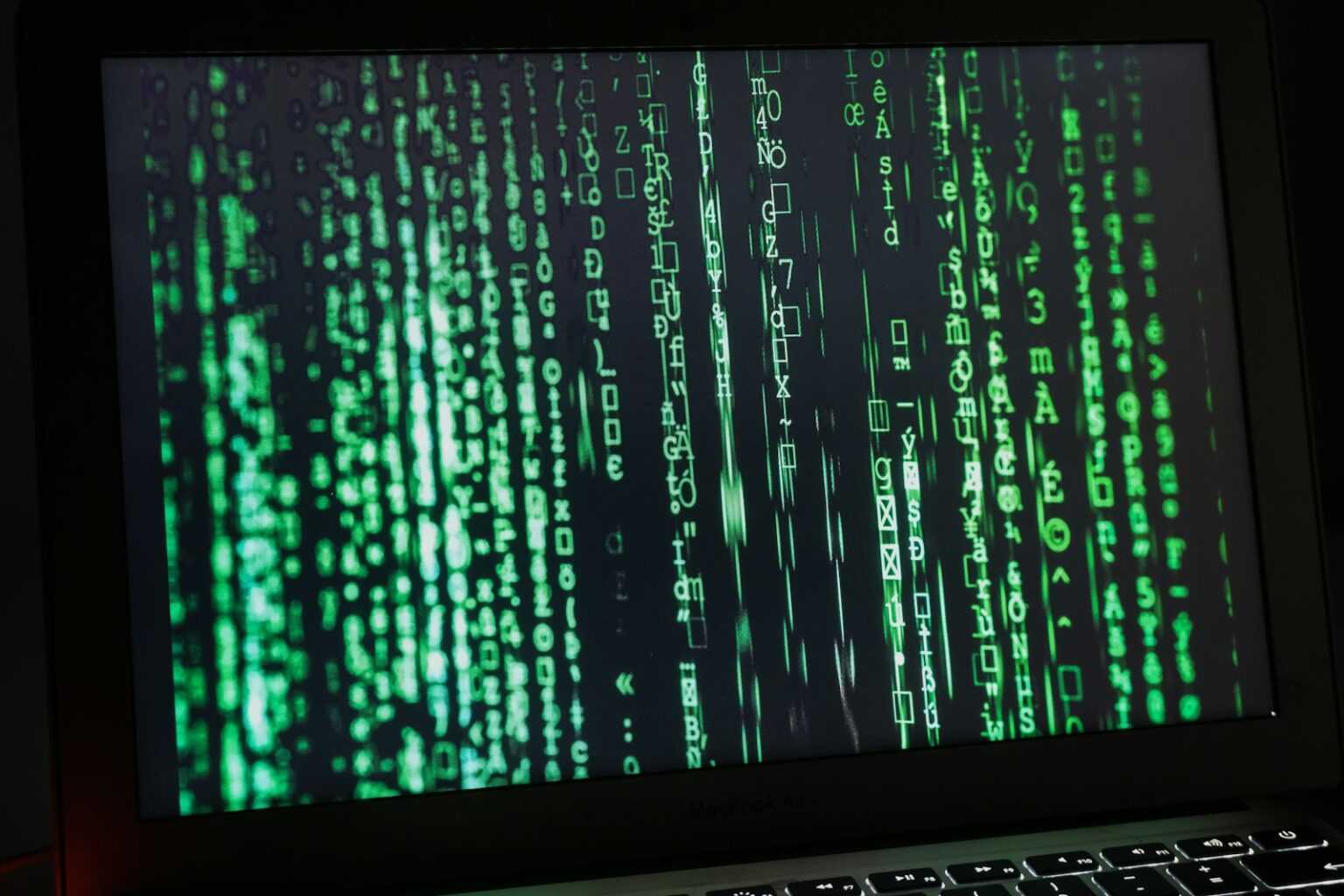Reliable unpredictability stems from high-quality chaotic inputs collected via diverse origins. True unpredictability relies on extracting sufficient disorder from physical phenomena or complex system states, rather than deterministic algorithms alone. Hardware-based mechanisms such as thermal noise, oscillator jitter, and photon detection provide robust sources of disorder that feed entropy pools.
Pseudorandom algorithms require continuous reseeding using fresh disorder samples to maintain resilience against prediction attacks. Purely algorithmic generators (PRNGs) cannot create genuine disorder internally; their strength depends on the initial seed’s randomness and subsequent entropy injections. Combining multiple independent hardware signals enhances statistical complexity and mitigates bias or pattern repetition.
Measuring the quality of incoming data streams through min-entropy estimation guides adaptive extraction processes. Statistical tests applied in real time ensure only sufficiently non-deterministic bits contribute to final outputs. Extraction functions compress raw inputs into nearly uniform distributions suitable for secure key material, balancing throughput with cryptographic strength.
Random number generation: entropy for cryptographic security
To ensure robust protection in blockchain protocols, the unpredictability of generated values must be grounded in genuine randomness derived from high-quality sources. Relying solely on deterministic algorithms like pseudorandom number generators (PRNGs) without integrating sufficient external irregularities exposes systems to potential predictability and compromise. Incorporating hardware-based phenomena such as thermal noise or quantum effects significantly enhances the unpredictability pool, providing a foundation difficult to reproduce or predict by adversaries.
Reliable extraction of stochastic data requires careful assessment of raw input variability combined with rigorous post-processing techniques to mitigate bias and correlation. For instance, hardware random number generators leveraging avalanche noise or ring oscillators serve as prime examples of effective physical origins feeding entropy pools. These physical signals, when properly sampled and conditioned, support secure seed material crucial for initializing deterministic processes that subsequently expand these seeds into extended sequences used in key derivation and digital signatures.
Sources and Integration of Unpredictability
Various methods contribute to accumulating unpredictability, each with distinct advantages and challenges:
- Hardware-based Sources: Including thermal fluctuations in resistors, photon arrival times, or jitter in clock signals offer genuine nondeterministic traits.
- Environmental Noise: Capturing minute variations from device sensors such as microphones or accelerometers can supplement entropy but require careful filtering against predictable patterns.
- User Interaction: Timing information from keystrokes or mouse movements introduces human-induced randomness; however, it is often insufficient alone due to limited throughput and possible observation attacks.
The fusion of these inputs into a consolidated state involves cryptographically sound conditioning functions–hashes or extractors–that distill true uncertainty while discarding systematic biases.
Pseudorandom Expansion and Assurance
Once high-grade initial seeds are established through reliable unpredictable sources, PRNGs take over to generate longer streams required by cryptographic protocols. Algorithms such as Fortuna or the NIST SP 800-90A CTR_DRBG model use block ciphers or hash functions internally to produce output indistinguishable from uniform randomness under defined assumptions. Periodic reseeding with fresh environmental data ensures sustained freshness and resistance against state compromise attempts.
A practical case study involves cryptocurrency wallets employing hardware security modules (HSMs) that combine onboard entropy harvesting circuits with deterministic expansion mechanisms. This layered approach helps prevent attackers from reconstructing secret keys even if part of the internal state becomes exposed. Validation suites like AIS31 or Dieharder test sequences for statistical anomalies ensuring adherence to expected complexity metrics before deployment.
Challenges and Experimental Approaches
The primary challenge lies in quantifying available unpredictability continuously during operation since environmental conditions fluctuate, potentially degrading source quality over time. Experimentally assessing min-entropy rates through repeated sampling guides adaptive reseeding intervals tailored for specific device contexts. Researchers have developed automated monitoring tools that flag anomalies indicating sensor degradation or external tampering attempts impacting randomness supply.
An instructive experiment involves measuring jitter variation on multiple clock domains within an embedded platform at different temperatures and power states. By statistically analyzing variance shifts correlated with operational parameters, one gains insight into optimal sampling strategies maximizing genuine chaos extraction while minimizing false positives arising from deterministic system noise components.
Recommendations for Secure Implementations
- Diversify Input Sources: Combine independent physical phenomena to avoid single points of failure affecting overall unpredictability quality.
- Implement Continuous Health Tests: Employ runtime checks validating ongoing randomness quality against known thresholds preventing silent failures undermining downstream security.
- Leverage Proven Conditioning Functions: Utilize vetted cryptographic primitives for entropy distillation ensuring minimal leakage of structural regularities present in raw measurements.
- Sustain Freshness Through Reseeding: Regularly update internal states using newly harvested non-deterministic data aligned with empirical entropy estimations adapting dynamically based on observed environmental conditions.
This systematic layering–from authentic physical stimuli collection through stringent validation to robust deterministic expansion–forms the backbone enabling resilient protection schemes within decentralized ledger technologies reliant on unpredictable secrets underpinning consensus mechanisms and asset custody models alike.
Sources of Cryptographic Entropy
To achieve robust protection in digital systems, the unpredictability inherent in entropy sources must be carefully selected and thoroughly evaluated. Hardware-based inputs such as thermal noise from semiconductors or jitter in clock signals provide a fundamental layer of randomness that strengthens cryptographic processes. These physical phenomena are inherently chaotic, making them excellent candidates to seed pseudorandom number generators (PRNGs) with sufficient initial uniqueness.
Software-based mechanisms also contribute valuable variability by harnessing environmental data like process scheduling timings, user input latencies, and system interrupts. While these sources introduce some degree of uncertainty, they require continuous assessment to ensure their output remains resistant against prediction or manipulation by adversaries targeting deterministic patterns.
Exploring Diverse Sources for Robust Randomness
Hardware Randomness: Utilizing analog components such as reverse-biased diodes or avalanche noise amplifiers offers high-quality irregularities that serve as genuine entropy pools. For instance, Intel’s Secure Key technology employs an on-chip digital random number generator leveraging thermal noise to produce non-deterministic bits directly accessible by software layers. Empirical measurements demonstrate output bit rates exceeding tens of megabits per second with low bias and minimal autocorrelation.
Environmental Noise: Sensors capturing ambient conditions–like microphone audio signals, camera pixel fluctuations under low light, or even network packet arrival intervals–can inject additional diversity. One experimental setup recorded inter-arrival times of asynchronous hardware interrupts in embedded devices to feed PRNG states dynamically. Such methods demand careful calibration to filter out systemic regularities that may weaken randomness quality over time.
- User Interaction Timings: Keystroke intervals and mouse movement trajectories exhibit natural variance exploitable during entropy collection phases.
- Disk Drive Latency Variations: Access times fluctuate due to mechanical tolerances and workload changes, providing subtle noise useful for seeding algorithms.
- Radio Frequency Background Noise: Captured through specialized sensors can add an additional unpredictable component especially in isolated environments.
The integration of these heterogeneous inputs into cryptographically secure pseudorandom number generators requires stringent whitening procedures and continuous health tests to detect degradation or potential compromises. Established standards like NIST SP 800-90B outline methodologies for estimating min-entropy contributions from individual sources and recommend combining multiple independent samples to increase overall unpredictability metrics.
An effective approach involves combining several independent sources into a composite pool before feeding PRNGs designed with proven cryptanalytic resistance such as Fortuna or Yarrow constructions. This multi-tiered strategy reduces reliance on any single source’s behavior and enhances resilience against targeted attempts at entropy depletion or spoofing attacks commonly observed in blockchain node implementations requiring secure key generation under adversarial conditions.
The ongoing task is to experimentally verify the statistical properties of collected data streams using suites like Dieharder or TestU01 while simultaneously monitoring operational parameters that might induce unintended correlations. This scientific rigor ensures that resulting sequences uphold unpredictability thresholds necessary for maintaining trustworthiness within distributed ledger technologies where private keys underpin transaction authenticity and confidentiality.
Measuring Entropy Quality
Accurate assessment of unpredictability in data streams requires rigorous evaluation techniques that quantify the degree of randomness extracted from multiple sources. One effective approach involves statistical testing suites such as NIST SP 800-90B and Dieharder, which analyze sequences generated by hardware devices or software algorithms to detect patterns or biases. These tests include frequency, autocorrelation, and entropy estimations that provide objective metrics on the quality of input signals feeding into deterministic pseudorandom functions (PRNGs). Reliable measurement ensures that these inputs contribute sufficient uncertainty to prevent predictability in cryptographic contexts.
Physical mechanisms used as origin points for randomness–such as electronic noise, clock jitter, or photonic events–must undergo continuous validation through entropy extraction analysis. Hardware random sources are often paired with conditioning components like hash functions or whitening algorithms to improve uniformity and reduce bias before integration with PRNG modules. Real-time monitoring frameworks track min-entropy rates, enabling dynamic adjustment or fallback strategies if degradation occurs. For instance, Intel’s RDRAND instruction combines on-chip thermal noise with a robust feedback mechanism to maintain consistent entropy output under diverse operational conditions.
Technical Methods and Case Studies
Advanced measurement methodologies incorporate both theoretical models and empirical data collection to characterize unpredictability precisely. Min-entropy estimation, representing the worst-case unpredictability per sample, is widely regarded as a conservative benchmark when evaluating source strength. For example, studies involving quantum random number generators demonstrate how photon arrival times yield high min-entropy values exceeding 0.99 bits per output bit after post-processing. Conversely, traditional environmental noise sources often require comprehensive statistical treatment to achieve comparable confidence levels.
Integrating multiple independent origins enhances robustness by mitigating single-source failures and increasing overall uncertainty pools feeding deterministic generators. A practical experiment might involve combining temperature sensor fluctuations with user input timing irregularities in embedded systems, subsequently applying a cryptographic extractor function to produce strong seeds for PRNGs. Continuous entropy health checks can be automated using entropy estimation tools embedded within firmware, providing immediate alerts if measured unpredictability dips below acceptable thresholds critical to maintaining resilience against predictive attacks.
Hardware RNG vs Software RNG: An Analytical Comparison
Opting for hardware-based devices as primary sources of unpredictability enhances the integrity of digital asset systems by supplying inherently non-deterministic signals derived from physical phenomena. These devices exploit quantum effects, thermal noise, or avalanche diodes to produce values that resist prediction and manipulation, thus providing a robust foundation for secure key material creation.
Conversely, software mechanisms rely on deterministic algorithms known as pseudorandom number generators (PRNGs), which expand initial seeds into sequences that emulate randomness. Although efficient and convenient for many applications, these methods depend heavily on the quality and unpredictability of their initial seed inputs, making them vulnerable if seed data is insufficiently variable or exposed.
Sources of Unpredictability in Hardware and Software Systems
Hardware solutions extract entropy directly from environmental variables such as electronic noise or timing jitter between clock domains. For instance, Intel’s RDRAND instruction interfaces with an integrated entropy source based on thermal noise within silicon circuits, ensuring high-quality outputs resistant to software-level attacks. Laboratory analysis shows that these hardware modules maintain statistical uniformity over billions of samples, supporting their suitability in sensitive cryptographic protocols.
Software-based PRNGs typically utilize system states like process IDs, timestamps, and user interactions to initialize their internal state. However, without continuous injection of new unpredictable inputs–often called entropy pools–their output can become predictable after sufficient observation. Research experiments demonstrate cases where weak seeding led to successful reconstruction of secret keys in blockchain wallets due to predictable PRNG outputs.
Evaluating Entropy Quality Through Experimental Methodologies
- Statistical Testing: Both hardware and software systems undergo rigorous suites such as NIST SP 800-22 or Dieharder tests to assess uniformity and independence characteristics.
- Environmental Sensitivity Checks: Hardware devices are evaluated under varied temperature and electromagnetic interference conditions to detect potential biases or failures.
- Seed Robustness Analysis: Software implementations require investigations into seed sourcing mechanisms; practical experiments often involve introducing controlled perturbations to measure resilience.
An experimental setup comparing a quantum random bit generator against a widely used Mersenne Twister PRNG revealed that although the latter excelled in speed and resource consumption, its output exhibited subtle correlations detectable via advanced spectral analysis–highlighting the trade-offs inherent in each approach.
Integrating Hybrid Models for Enhanced Randomness Assurance
A promising technique involves combining hardware-derived entropy with algorithmic post-processing through cryptographically secure PRNGs (CSPRNGs). This fusion leverages the unpredictability of physical sources while benefiting from the efficiency and reproducibility of mathematical expansion functions. Case studies within blockchain node implementations demonstrate improved resistance against state compromise extension attacks when hybrid schemes are employed versus purely deterministic generators.
The interplay between these methodologies invites further experimental exploration by practitioners seeking resilient solutions tailored to specific application constraints within decentralized ledger technologies.
Cultivating a deep understanding through hands-on experimentation – such as measuring output bias under varying operational loads or testing reseeding intervals – empowers developers and analysts alike to refine source selection strategies. Embracing this iterative investigation fosters innovation that strengthens trust anchors foundational to distributed consensus mechanisms reliant on unpredictability generation systems.
Seeding algorithms securely
Effective initialization of algorithms in cryptographic systems requires amalgamating diverse, unpredictable input from multiple sources to ensure unpredictability. Combining signals from hardware modules such as thermal noise diodes, oscillator jitter, and user interaction timings enhances the initial value’s complexity, reducing susceptibility to prediction or replay attacks. Incorporation of environmental data–like system interrupts or disk activity counters–adds layers of variability critical for robust seed formation.
Hardware-based input contributes significantly to enhancing the quality of initial values by providing non-deterministic phenomena unavailable in purely software-generated sequences. For instance, specialized integrated circuits designed to capture quantum effects or avalanche diode fluctuations offer inherently irregular signals. These physical origins serve as prime contributors in refining the starting point for subsequent pseudorandom calculations, balancing computational efficiency with high unpredictability thresholds.
Methodologies and practical considerations
Implementing secure seeding involves a systematic approach: first, identify reliable entropy reservoirs within the operating environment; second, apply whitening functions such as cryptographic hash algorithms to mitigate bias and correlation; third, use continuous health checks to detect source degradation or manipulation attempts. Experimental setups often combine multiple independent streams through mixing constructions like XOR or hashing combined with feedback mechanisms, ensuring that compromise of one input does not invalidate the entire process.
Case studies demonstrate that inadequate seeding directly correlates with vulnerabilities exploited in blockchain wallet key derivation or session token creation. For example, devices relying solely on timestamps without supplementary physical randomness exhibited predictable outcomes under laboratory attack scenarios. Conversely, hybrid designs integrating hardware randomness and system-level events consistently produced seeds resistant to both statistical inference and side-channel analysis over extended observation periods.
An effective experimental protocol encourages iterative validation: measure entropy estimates using standardized metrics (e.g., min-entropy), perform statistical testing suites (NIST SP 800-90B/C), and simulate adversarial models attempting state reconstruction. Researchers can recreate these tests using accessible hardware platforms coupled with open-source frameworks, fostering hands-on understanding of how seed material quality impacts overall cryptosystem resilience. This empirical mindset empowers developers to refine their designs based on quantifiable evidence rather than assumptions alone.
Mitigating Entropy Depletion Risks
Prioritize integrating multiple independent sources to maintain a robust pool of unpredictability during value synthesis. Hardware-based mechanisms, such as thermal noise harvesters or quantum effect modules, combined with well-vetted pseudo-random algorithms (PRNGs), significantly reduce the risk of depletion in underlying unpredictability reserves.
Systematic reseeding schedules informed by real-time entropy pool assessments provide dynamic replenishment, preventing deterministic patterns from emerging in sequential outputs. Using hybrid designs that merge physical phenomena with algorithmic post-processing ensures both high throughput and resilience against state exhaustion.
Key Technical Insights and Future Directions
- Diversity of input streams: Leveraging asynchronous hardware events alongside environmental noise amplifies disorder accumulation beyond singular failure modes.
- Adaptive entropy estimation: Implementing continuous statistical tests–such as min-entropy measurements–enables on-the-fly detection of source degradation or bias shifts.
- Robust PRNG constructions: Cryptographically secure generators like Fortuna or CTR_DRBG, when seeded with quality physical randomness, minimize predictability while maintaining computational efficiency.
- Hardware-assisted acceleration: Trusted platform modules (TPMs) and dedicated secure elements contribute specialized entropy collectors that resist external manipulation or internal state compromise.
The broader impact extends beyond isolated systems: blockchain networks depend critically on the integrity of unpredictable value supply chains to secure consensus protocols and safeguard private keys. As adversarial methods evolve, reliance on single deterministic generators becomes increasingly hazardous. Experimental research into leveraging quantum phenomena for scalable, certified unpredictability promises breakthroughs in ensuring sustained disorder influx without performance penalties.
A promising avenue lies in combining hardware-derived signals with post-quantum resilient algorithms, creating layered defenses against both classical and emerging threats. This approach invites rigorous lab experimentation involving controlled injection of entropy deficits followed by recovery through multi-tiered regeneration processes. By systematically probing failure thresholds and recovery dynamics, practitioners can refine system architectures tailored for long-term operational stability under diverse conditions.








